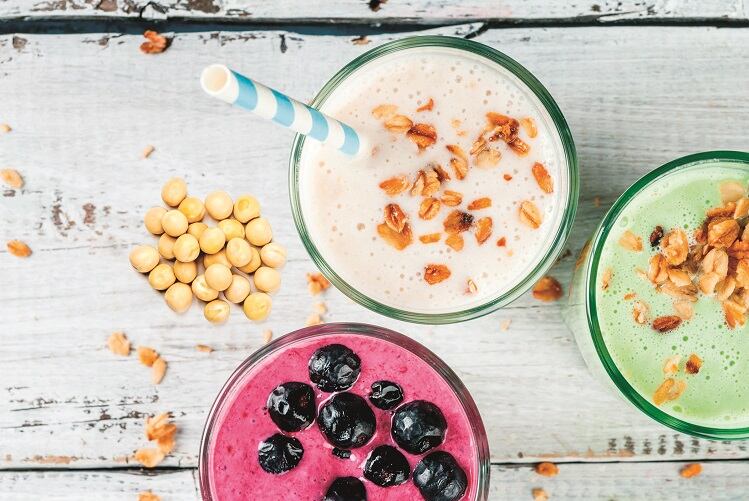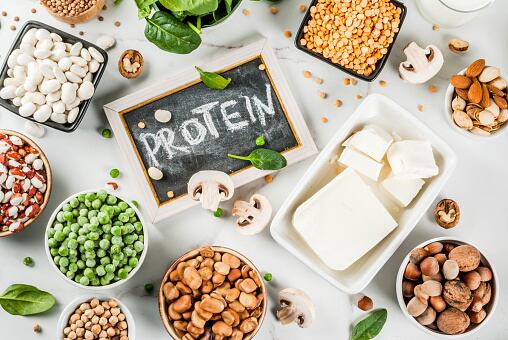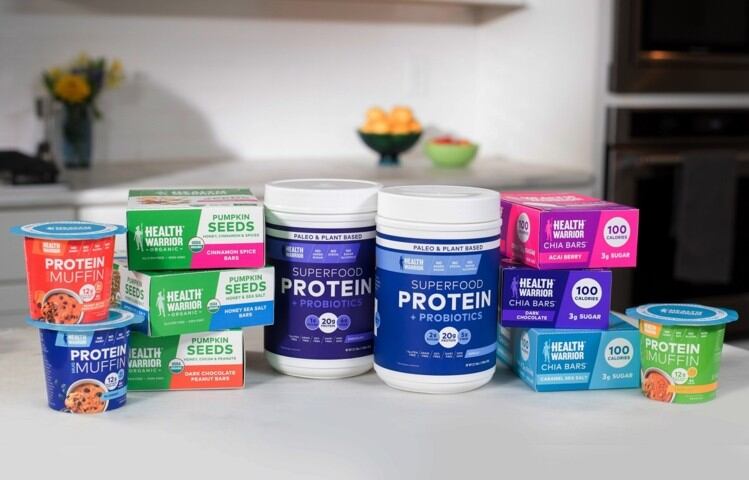DuPont Nutrition & Health recently released a report that documented plant-based eating in the US. The results came from a survey done together with HealthFocus International, which involved surveying the eating habits of more than 1,000 US consumers.
Some highlights: 52% of US consumers are eating more plant-based foods and beverages, and almost 60% of respondents said that their change to plant-based alternatives was “permanent or they hoped it was permanent.”
One shining example is the shift to protein powders from plant sources like pea or rice, a category once dominated by whey.
“Plant-based protein supplements are growing at a faster rate than the overall protein supplement category, thus gaining market share,” said Dr Greg Paul, marketing leader of beverage industry at DuPont Nutrition & Health, citing data from market research firm Nielsen.
For the 52-week period ending January 13, 2018, Nielsen’s data revealed that the top 15 plant-based protein supplements, accounting for more than $75 million in sales or roughly 8% of the category, showed a year-over-year growth of 51% compared to 15% for the overall category, Dr Paul said.
Plant-based beverages saw early success in sports nutrition
The sports nutrition powder category was a foot in the door for plant based proteins, Dr Paul said. In 2013, according to data from Netherlands-based Innova Market Insights, more sports powders were launched with plant positioning than any other food and beverage category.
Plant protein powders still make up less than 10% of all protein powder sales, but the consumers who buy them have different objectives than those who buy whey protein. “Building muscle was not among the top benefits cited by consumers as a motivating factor for consuming plant-based foods and beverages,” Dr Paul said, citing results from DuPont’s latest survey.
Instead, plant proteins are benefiting from consumers wanting “health for today, health for tomorrow and health for the planet,” he added.
Some plant protein launches we covered this year:
- Health Warrior, recently acquired by PepsiCo, launched a plant protein powder blend fortified with probiotics
- Start-up OWYN introduced a ready-to-drink plant protein drink
- Foundation Fitness launched a line of protein drinks in a can at Walmart, one of which is a plant-based protein shake
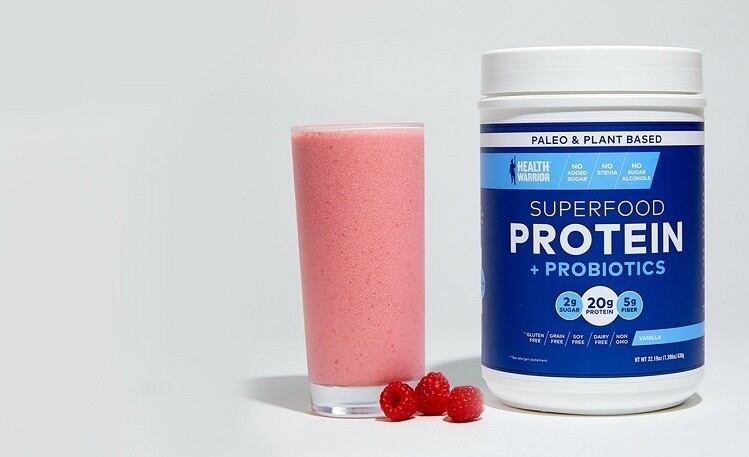
“We recognize more fitness-focused consumers are alternating between dairy protein and plant protein beverages as part of their training program.”
Additionally, consumers are willing to pay a premium for plant protein shakes. “Consumers [cited] protein shakes as the category they would be most willing to pay 10% more for plant-based options,” Dr Paul added.
Targeting general health
“Though dairy proteins may still be favored among bodybuilders and serious athletes, the more mainstream fitness enthusiasts are embracing plant as part of an overall healthy lifestyle,” Dr Paul said.
Another market research firm, UK-based Lumina Intelligence, found similar consumer motivations when it comes to purchasing plant protein. (Lumina is owned by William Reed Business Media, publisher of NutraIngredients-USA).
“When looking at health claims on packaging, we’re finding that plant proteins are hitting the mark by targeting general health, immunity, digestive health, and the more niche concerns of consumers that weren’t being addressed by animal-based products,” said Thomas Morgan, market analyst for sports nutrition at Lumina.
“With this plant proteins are getting the buzz from general consumers, and engagement related to them is increasing. Product scores for proteins are still lower for powders though on average, so there is still room for improvement.”
Where did soy go?
Lumina recently released a report of its sports nutrition market research, analyzing 2,600 unique brand variants and 750 distinct brands across 20 countries.
It highlighted pea protein’s overtake of soy, once the chief plant-based protein used in sports nutrition. Soy’s poor reputation in terms of sustainability (widely associated with the unpopular label ‘Genetically Modified Crop’), allergenicity, and studies pointing to its potential in causing hormonal imbalances (though this is disputed) contribute to its popularity decline.
Pea, on the other hand, has been growing tremendously. Lumina’s data revealed that pea protein over-indexed as a source for plant-based protein powders, followed by rice protein, and then soy protein.
It has attracted investment from agribusiness giants like Cargill, which has teamed with pea protein developer Puris, and DuPont, which just launched its own pea protein ingredient this year.
“Not having been tarred with negative associations, neither in terms of health nor sustainability, is clearly pushing pea protein ingredients’ dynamism,” according to Lumina’s report.
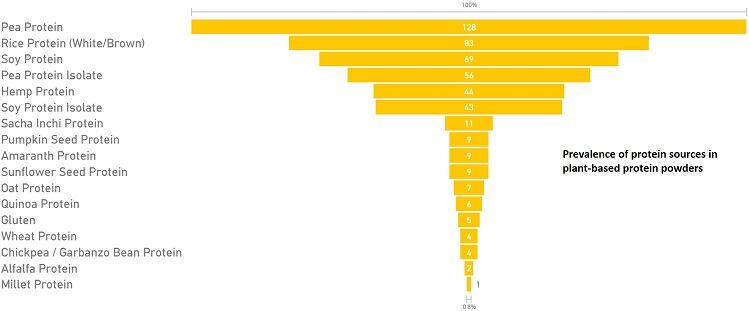
Coming up next: Hemp and Quinoa protein
Lumina’s data pinpointed hemp and quinoa as rising stars in plant protein. “Hemp and quinoa in general terms are relatively popular already, but in protein they address a few of the problems currently plaguing the plant protein category,” Morgan said.
Hemp especially may get a boost in commercialization in the US after the new Farm Bill passes, loosening up barriers of growing hemp stateside (when it comes to CBD though, that’s a whole different monster).
Hemp and quinoa have richer amino acid profiles than pea and rice, according to Morgan.
“Plant proteins are seen to have incomplete amino acid profiles. From analyzing the back of pack amino acid profiles of over 1,500 product variants across 20 countries, we can see that manufacturers are currently addressing these concerns by blending multiple proteins to give a full profile (namely pea and rice), and amino profiles are closely matching those of animal-derived proteins for that reason.”
“The reason that we see hemp and quinoa as rising stars is that they have complete profiles without the need to blend,” Morgan added.
Interested in Sports Nutrition?

The inaugural NutraIngredients-USA Sports Nutrition Summit, in association with the International Society of Sports Nutrition, will bring together leading scientists, brands and retailers, market analysts, and innovators in a unique, market-leading face-to-face event.
The key themes of this event include:
- The “size of the prize”
- The power and importance of social media
- Positioning and differentiation
- Sports nutrition and the military - product use survey data and enhancing the performance of Warfighters
- The State of the Science: Sports, fitness and exercise Nutrition
- Sports Nutrition products and Elite Athletes
- Alphabet soup: Everything brands need to know about GMPs, NDIs, AERs, DASCA, SARMs…
- Bacterial boosts – The microbiome and sports
- Personalization and the digital revolution
- Nootropics & sports nutrition

